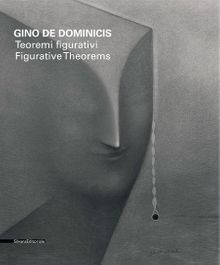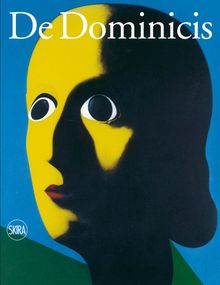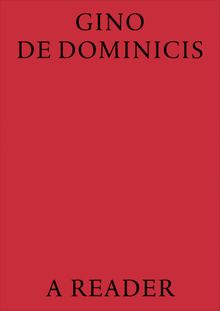ARTIST MONOGRAPHS
|
|
in stock $45.00 Free Shipping UPS GROUND IN THE CONTINENTAL U.S. |
 Gino De Dominicis: Figurative Theorems
Gino De Dominicis: Figurative Theorems
Published by Silvana Editoriale.
Text by Vittorio Sgarbi, Daniela Severi, Edoardo Gnemmi.
PUBLISHER
BOOK FORMAT
Paperback, 9 x 11 in. / 144 pgs / 47 color.
PUBLISHING STATUS
Pub Date 3/31/2012
Out of print
DISTRIBUTION
D.A.P. Exclusive
Catalog: SPRING 2012 p. 140
PRODUCT DETAILS
ISBN 9788836621019 TRADE
List Price: $40.00 CAD $50.00
AVAILABILITY
Not available
STATUS: Out of print | 00/00/00 For assistance locating a copy, please see our list of recommended out of print specialists |
 Gino de Dominicis: Catalogue Raisonne
Gino de Dominicis: Catalogue Raisonne
Published by Skira.
By Italo Tomassoni.
A complex and elusive artist, Gino De Dominicis is considered one of the key figures in contemporary Italian art and a reference point for both the artists of his time and younger generations. Gino De Dominicis' life has always been shrouded in mystery. He chose to stay outside the sphere of media attention and due to this intransigent position no catalogs or books on his works were published. The work entitled “Seconda soluzione di immortalità. L'universo è immobile“, presented at the Venice Art Biennale in 1972, was remembered however: Gino de Dominicis faced charges for having exhibited a young man with Down's Syndrome as an art object. The absolute originality of much of his intuition has anticipated artistic experiences that came to fruit in the 21st century. The catalog, edited by Italo Tomassoni, brings together more than 700 artworks, each one accompanied by a dossier which, alongside the usual technical, chronological and bibliographic data, provides information regarding the context and circumstances that led to the work's creation.The volume also includes a section devoted to the artist's writings, a critical anthology and a catalogue raisonné of his works. The book concludes with appendices reproducing rare and unpublished documents dealing with the artist's life, a complete list of his solo exhibitions, his participation in group shows and an extensive bibliography.
Together with Harald Szeemann, Italo Tomassoni curated the first retrospective devoted to Gino De Dominicis at the 48th Venice Art Biennale in 1999. In December 1998 he founded the Associazione Gino De Dominicis. He is among the founders of the Centro Italiano Arte Contemporanea di Foligno, of which he is also the Artistic Director. He held the chair of Art History at the Academy in Perugia until 2001, and from 2002 to 2008 he taught Copyright in contemporary Artwork at Rome's Sapienza University.
PUBLISHER
Skira
BOOK FORMAT
Hardcover, 9.75 x 14 in. / 576 pgs / 100 color / 800 bw.
PUBLISHING STATUS
Pub Date 9/20/2011
Active
DISTRIBUTION
D.A.P. Exclusive
Catalog: Publisher Backlist
PRODUCT DETAILS
ISBN 9788857206844 TRADE
List Price: $340.00 CAD $440.00
AVAILABILITY
In stock
in stock $340.00 Free Shipping UPS GROUND IN THE CONTINENTAL U.S. |

